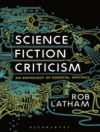One of the classical and most talked about novel, this story seems to be a complex web of characters and events. Each person comes with his own dreams, plans and perspective towards life. Laced with numerous love triangles and old flames rekindling themselves, the story is a very gripping plot involving human aspirations and dreams. The unfurling of events before the protagonist of the story Nick Carraway, takes him from being a mere participant in the course of action to a mode of introspection where he questions the worth of all this hot pursuit for wealth and power, when finally, it always leads to nothing but heartbreak and a feeling of disgust and shame.
Cumpărați această carte electronică și primiți încă 1 GRATUIT!
Limba Engleză ● Format EPUB ● ISBN 9789354620041 ● Mărime fișier 0.3 MB ● Editura True Sign Publishing House ● Publicat 2023 ● Descărcabil 24 luni ● Valută EUR ● ID 8284774 ● Protecție împotriva copiilor Adobe DRM
Necesită un cititor de ebook capabil de DRM












